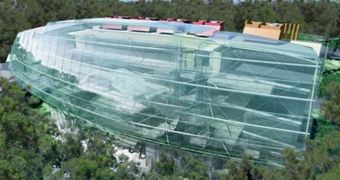As time passes, it becomes increasingly clear that fossil fuels will no longer be able to cut it in terms of servicing our power needs without destroying Earth. Experts say that hydrogen, the most abundant substance in the Universe, is the chemical of the future.
Electricity coming from alternative sources is currently subjected to limitations of a practical nature. Clouds prevent solar energy from being created, while calm or stormy days stop wind farms.
Additionally, energy obtained through these means needs to be consumed as it is produced, since scientists have not yet come up with a method of storing it as it is produced.
But using hydrogen as a source of electricity could circumvent all of these problems. The better news is that we don't have to wait for the technology to be developed, since it's already here.
The thing about this chemical is that, though abundant, it can only be found coupled with other materials, in substances such as methane and water. It therefore has to be recovered before use.
But some experts believe that renewable energy could be used as a source of hydrogen. When more current is produced than is demanded, the excess could be passed through water.
A process called electrolysis will then ensue, which splits water into its individual components, hydrogen and oxygen. Both substances can then be used for other applications.
The resulting H2 can then be placed inside pressurized tanks, stored for later use, or sent to processing plants that can include it in fuel cells. Combined with oxygen, it can provide energy for cars and homes, while producing nothing but water as a waste.
An added advantage is that hydrogen-powered fuel cells would require little to no rare chemicals as batteries due, which would minimize commercial confrontations, and reduce international competition.
“Hydrogen is potentially limitless,” says professor Ned Pankhurst, who is the Deputy Vice Chancellor of the Griffith University, in Australia, quoted by Our World.
The university will house a new landmark starting in 2013, the Sir Samuel Griffith Center, which will be powered entirely by energy from the Sun and water. The entire building will be off the grid.
Recycled steel, rubber, timber, and crushed demolition concrete make up 30 percent of the materials that will go into the new, six-story research facility. The building will also have water recycling capabilities, advanced water collection, a green roof, and natural ventilation.
“We want people to copy and develop, we want that cycle to continue on and on, and we rapidly want to be considered old-fashioned because the field has continued to develop,” Pankhurst says.

 14 DAY TRIAL //
14 DAY TRIAL //